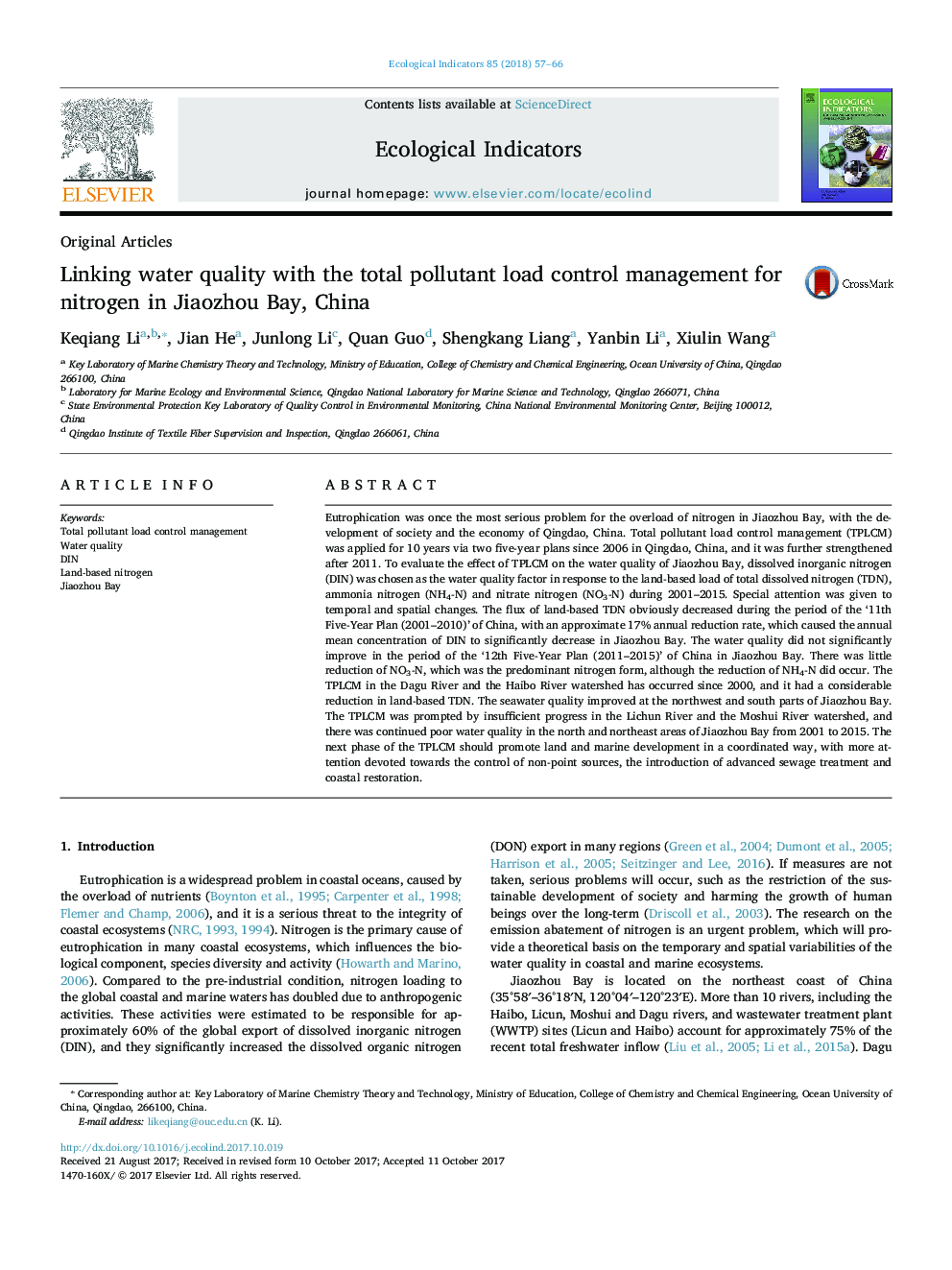| Article ID | Journal | Published Year | Pages | File Type |
|---|---|---|---|---|
| 5741292 | Ecological Indicators | 2018 | 10 Pages |
â¢The reduction of land-based TDN caused DIN concentration decrease in Jiaozhou Bay.â¢Little reduction of nitrate (predominant form) blocked water quality improvement.â¢Continued poor water quality in the northeast JZB for insufficient TPLCM nearby.
Eutrophication was once the most serious problem for the overload of nitrogen in Jiaozhou Bay, with the development of society and the economy of Qingdao, China. Total pollutant load control management (TPLCM) was applied for 10 years via two five-year plans since 2006 in Qingdao, China, and it was further strengthened after 2011. To evaluate the effect of TPLCM on the water quality of Jiaozhou Bay, dissolved inorganic nitrogen (DIN) was chosen as the water quality factor in response to the land-based load of total dissolved nitrogen (TDN), ammonia nitrogen (NH4-N) and nitrate nitrogen (NO3-N) during 2001-2015. Special attention was given to temporal and spatial changes. The flux of land-based TDN obviously decreased during the period of the '11th Five-Year Plan (2001-2010)' of China, with an approximate 17% annual reduction rate, which caused the annual mean concentration of DIN to significantly decrease in Jiaozhou Bay. The water quality did not significantly improve in the period of the '12th Five-Year Plan (2011-2015)' of China in Jiaozhou Bay. There was little reduction of NO3-N, which was the predominant nitrogen form, although the reduction of NH4-N did occur. The TPLCM in the Dagu River and the Haibo River watershed has occurred since 2000, and it had a considerable reduction in land-based TDN. The seawater quality improved at the northwest and south parts of Jiaozhou Bay. The TPLCM was prompted by insufficient progress in the Lichun River and the Moshui River watershed, and there was continued poor water quality in the north and northeast areas of Jiaozhou Bay from 2001 to 2015. The next phase of the TPLCM should promote land and marine development in a coordinated way, with more attention devoted towards the control of non-point sources, the introduction of advanced sewage treatment and coastal restoration.
Graphical abstractThe effect of the TPLCM in Jiaozhou Bay: The water quality significantly improved in the '11th Five-Year Plan (2006-2010)' of China, but not in the '12th Five-Year Plan (2011-2015)' of China in Jiaozhou Bay, where the Dagu River and the Haibo River watershed had a considerable reduction in land-based TDN, with a water quality improvement, whilst the TPLCM was prompted by insufficient progress in the Lichun River and the Moshui River watershed, with continued poor seawater quality nearby from 2001 to 2015.Download high-res image (317KB)Download full-size image
